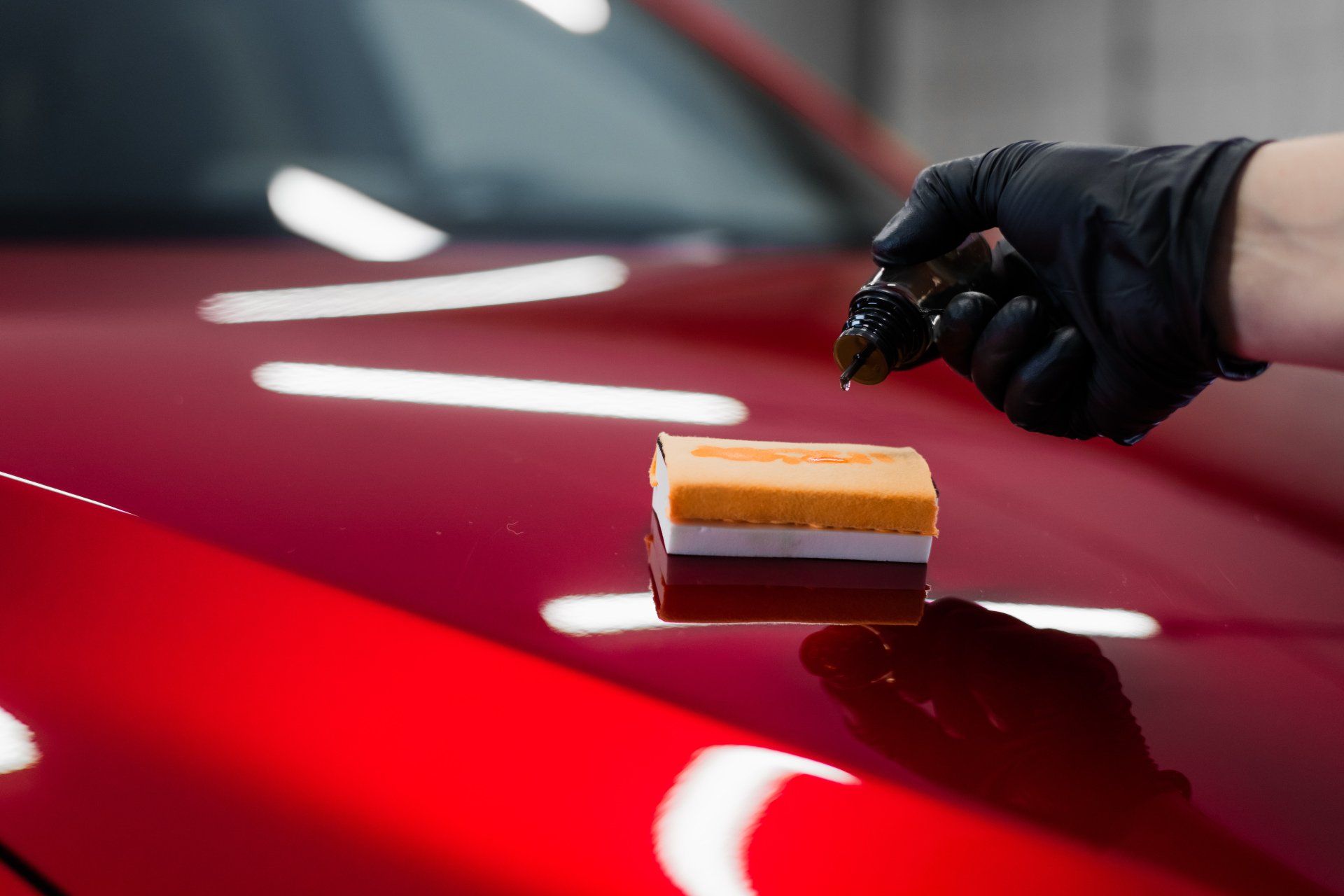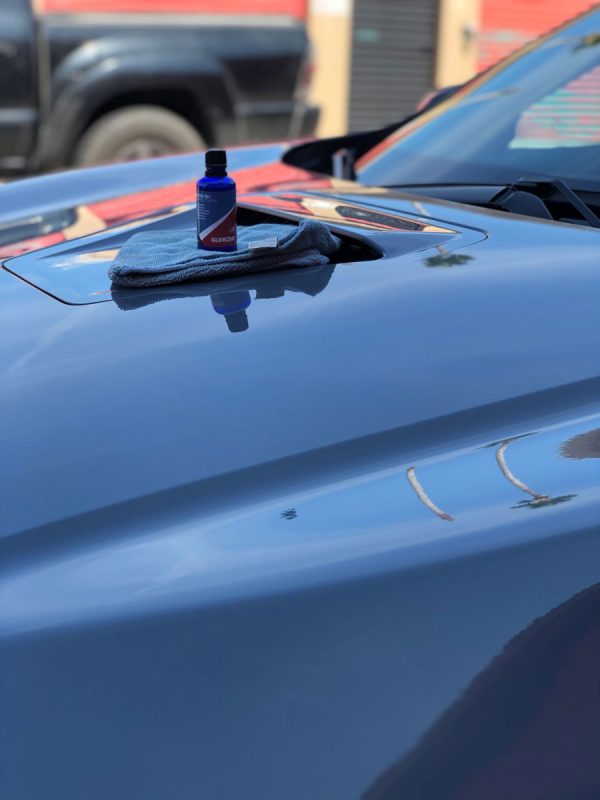Comprehending the Science Behind Ceramic Coating for Boosted Lorry Durability
The science of ceramic layer is transforming vehicle maintenance by giving a powerful shield versus harsh ecological factors. At its core, this innovation utilizes the power of silicon dioxide and titanium dioxide to create a long lasting, safety layer. Yet what exactly makes these substances so reliable in protecting a car's outside? As we discover the complex composition and application process of ceramic finishings, we discover the secrets behind their superior defense and durability. Exactly how does this compare to traditional approaches, and what effects does it have for automobile maintenance in the long term? The answers might stun you.

Composition of Ceramic Coatings
Ceramic layers are mainly made up of silicon dioxide (SiO2), which is stemmed from natural products like quartz and sand. This compound develops the foundation of the covering, supplying its particular solidity and resistance to ecological elements. Along with SiO2, ceramic coatings commonly incorporate titanium dioxide (TiO2) for improved UV defense and increased resistance to environmental toxins. These nanocomposite materials produce a robust, chemical bond with the lorry's surface area, providing an enduring protective layer.
The solution of ceramic coverings is a precise process where the concentration of SiO2 can substantially affect the layer's efficiency. Greater SiO2 web content typically causes better resilience and hardness, adding to the finishing's capability to resist scrapes and chemical etching. The balance of components is crucial; too much SiO2 can make the coating brittle, while too little can compromise its safety properties.
Manufacturers might likewise integrate additional substances, such as polysilazane, to improve adaptability and simplicity of application. These additives enhance the finishing's hydrophobic buildings, making certain water and pollutants bead off the surface area effortlessly. This engineered composition emphasizes the effectiveness of ceramic finishings in safeguarding a lorry's outside versus a range of adverse problems.
Application Process Clarified
Applying a ceramic covering to a car includes a number of crucial actions, each necessary to guaranteeing optimal adhesion and efficiency of the safety layer - ceramic coating. The procedure begins with an extensive wash and purification of the vehicle's surface area to get rid of dirt, grime, and previous waxes or sealers. This step is vital as any impurities left externally can prevent the layer's ability to bond successfully
Following the first cleaning, the following step includes brightening the car to get rid of any kind of blemishes, such as swirl marks or scratches. Sprucing up ensures a smooth surface, which is crucial for the coating to stick appropriately and supply a consistent finish. After brightening, a surface area preparation spray is utilized to get rid of any staying residues and ensure that the surface is entirely clean.

Protective Benefits
Usually hailed for its exceptional safety high qualities, a ceramic coating uses numerous benefits that substantially enhance vehicle longevity. At its core, ceramic covering develops a hard, semi-permanent obstacle over a vehicle's exterior, which acts as a shield versus numerous environmental risks.
Additionally, ceramic coatings exhibit hydrophobic residential properties, implying they repel water and assist in a self-cleaning impact. This feature reduces the adherence of dirt and mud, simplifying upkeep and cleaning processes. The finish's resistance to chemical etching better ensures that the lorry's surface area remains unblemished in spite of exposure to extreme cleaner and toxins.
In addition to these protective benefits, the ceramic layer boosts an automobile's visual appeal by developing a glossy surface that emphasizes color deepness and quality. This not only sustains the vehicle's aesthetic charm however likewise adds to its long-term value by maintaining the honesty of its exterior gradually.
Comparing to Conventional Methods
Unlike conventional techniques of automobile protection, such as waxing or sealers, ceramic coatings provide an even more durable and resilient service. Where waxes and sealers normally provide a short-term layer of protection, often needing reapplication every couple of months, ceramic coverings create a semi-permanent bond with the lorry's paint. This bond creates a safety layer that is resistant to environmental contaminants, UV damages, and minor abrasions.
Traditional waxes are primarily made up of natural parts like carnauba wax, supplying a glossy surface however lacking the durable protective high qualities of ceramic finishings. Sealers, while synthetic and offering somewhat better durability than waxes, still drop brief in comparison to the strength and chemical resistance of ceramic finishings. The advanced technology of ceramic finishes incorporates nanotechnology, which enables them to complete tiny blemishes in the paint surface area, resulting in a smoother and a lot more hydrophobic coating.
In terms of application, ceramic layers require my link an even more careful process, commonly necessitating expert installment to ensure optimal performance. This contrasts with the fairly uncomplicated application of sealants and waxes, which can be used in the house. The exceptional security and visual improvement supplied by ceramic finishings warrant the investment for those seeking lasting vehicle conservation.
Long Life and Maintenance
How does the long life of ceramic layers translate into ease of maintenance wikipedia reference for car owners? The sophisticated solution of ceramic coverings offers a robust protective layer on the car's surface, which considerably prolongs the life expectancy of the cars and truck's outside coating. This durability means that the coating acts as a shield against ecological impurities such as UV rays, bird droppings, and roadway gunk, which can otherwise degrade paintwork over time. Consequently, lorries covered with ceramic items require less regular washing and outlining efforts, thus decreasing maintenance time and prices for proprietors.
Additionally, the hydrophobic nature of ceramic coatings allows water and various other fluids to bead up and roll off the surface, bring dust and particles with them. While the finishing itself is durable, it is not totally maintenance-free. Thus, ceramic finishings supply a beneficial equilibrium between lasting sturdiness and streamlined upkeep for lorry treatment.
Conclusion
Ceramic coverings, with their sophisticated chemical composition of silicon dioxide and titanium dioxide, supply an awesome obstacle against environmental damage, significantly enhancing car toughness. The hydrophobic properties advertise self-cleaning, decreasing upkeep initiatives and preserving aesthetic charm. When compared to traditional methods, visit this web-site ceramic layers supply remarkable protection versus UV rays, oxidation, and chemical etching. This innovation extends the lifespan of automobile exteriors, making it an innovative solution for lasting preservation and minimal maintenance.
The formula of ceramic coatings is a careful process where the concentration of SiO2 can significantly influence the finishing's efficiency.Applying a ceramic layer to a car entails several essential steps, each necessary to making sure optimal bond and performance of the protective layer.Frequently hailed for its remarkable safety top qualities, a ceramic covering uses numerous benefits that substantially boost car longevity. The advanced formula of ceramic finishes provides a robust protective layer on the vehicle's surface area, which substantially expands the life-span of the cars and truck's exterior surface.Ceramic coverings, with their innovative chemical composition of silicon dioxide and titanium dioxide, offer a powerful barrier versus ecological damages, dramatically boosting lorry resilience.